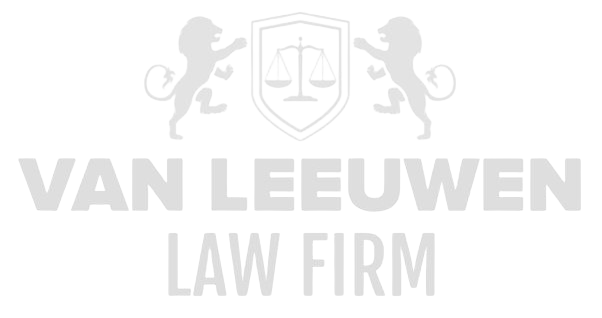In today’s business and legal environment, white-collar crime represents an increasingly prominent area of focus within both national and international legal frameworks. The complexity of modern corporate structures, combined with the growing pressure of compliance requirements and regulatory obligations, creates an environment in which the risks of criminal liability for legal entities are substantial. The criminal law framework for corporations does not focus solely on individual employees but also seeks to hold the organization as a whole accountable for the occurrence and continuation of unlawful conduct. Particular attention is given to the manner in which governance, internal culture, and organizational systems contribute to either the emergence of violations or their mitigation. The legal foundations for attributing criminal liability to legal entities are central to this approach and require a thorough understanding of both formal legislation and judicial interpretation.
The need for comprehensive preventive mechanisms within corporations is not solely a response to legal pressure but also a strategic measure for protecting reputation and business continuity. Organizations are increasingly exposed to public and regulatory scrutiny, where non-compliance with statutory obligations, such as those arising from data protection legislation, can trigger sanctions and potential claims. Cultural assessments, compliance programs, and governance structures are therefore regarded not merely as internal policy tools but as essential components of risk management and strategic corporate operations. The complex interaction between criminal liability, civil claims, and reputational management requires an integrated approach in which prevention, detection, and remediation are central.
Legal Bases for the Attribution of Criminal Liability to Legal Entities
The attribution of criminal liability to legal entities is rooted in a comprehensive body of legislation designed to protect both the legal order and societal interests. Under Dutch law, as operationalized in Article 51 of the Criminal Code, a legal entity may be held criminally liable for acts committed on its behalf or for its benefit. This liability extends to both executive and operational levels, necessitating a careful analysis of organizational decision-making processes and the degree of oversight. Legal doctrine emphasizes that attribution does not automatically apply to every violation within an organization but depends on a direct or indirect connection between the act and the entity’s authority.
The scope of this liability has been significantly expanded through case law recognizing the concepts of ‘organizational culture’ and ‘behavior-influencing systems’ within corporations. Courts have repeatedly emphasized that inadequate oversight, negligence in internal control mechanisms, and the absence of effective compliance structures can lead to independent corporate liability. In this context, the legal entity functions not merely as a juridical vehicle but as an entity whose conduct and internal processes may be evaluated for their contribution to the commission of criminal offenses. This creates a normative framework in which legal entities are called upon to implement systematic measures to prevent violations.
Moreover, the legal attribution is often considered in relation to international standards and comparable regulations in other jurisdictions, such as the United States Foreign Corrupt Practices Act and the UK Bribery Act. These frameworks emphasize the obligation of organizations to foster a culture of integrity and compliance, which has direct implications for criminal liability. The harmonization of national and international norms underscores the importance of a proactive approach, in which both preventive and corrective measures are strategically employed to minimize legal risks and strengthen the organization’s position.
Cultural Assessments within Organizations as a Mitigation Tool
Cultural assessments within organizations constitute a critical instrument for identifying potential risks in the realm of white-collar crime. These assessments focus on mapping informal behavioral norms, decision-making processes, and the overall integrity culture, evaluating the extent to which employees and management comply with established ethical and legal standards. A comprehensive analysis of organizational culture can provide insight into risk awareness, the presence of informal pressures to breach rules, and the effectiveness of internal communication channels. This information is essential for designing targeted interventions that are both preventive and corrective in nature.
The implementation of cultural assessments also has direct legal relevance. Demonstrating a structured and systematic approach to risk management allows the organization to position itself as an entity proactively acting to prevent criminal conduct. Such assessments may serve as evidence of due diligence and mitigation when evaluating liability before regulators and courts. Attention is also given to the role of executives and supervisory bodies in shaping culture, as their behavior and decisions significantly impact the overall level of integrity within the organization.
A cultural assessment further acts as a catalyst for the development of tailored programs aimed at influencing behavior and enhancing internal training. It enables organizations to identify and address weaknesses in communication, supervision, and incentive systems, while implementing a transparent and accountable operational framework. By continuously monitoring culture and behavior, an ongoing improvement process is established, which not only reduces compliance risks but also strengthens overall business operations and reputation. Consequently, cultural assessments become both a strategic and legally significant tool directly contributing to the mitigation of liability.
Compliance Programs as a Mitigating Factor
Compliance programs have evolved into a fundamental instrument for preventing white-collar crime and limiting the criminal liability of legal entities. These programs encompass policies, internal controls, reporting systems, and codes of conduct designed to instruct and monitor employees and management on compliance with legal and ethical standards. Adequate documentation and implementation of such programs can significantly influence the assessment of liability by courts, where the existence of a robust compliance program may result in reduced penalties or even the exemption from sanctions.
The effectiveness of compliance programs depends on the extent to which they are integrated into daily operational processes. They are not merely formal documents or protocols but represent a culture of continuous compliance, oversight, and training. Case law emphasizes that a program can only be considered mitigating if it is practically applicable, approved by the board, and regularly evaluated. The involvement of the Board of Directors and supervisory bodies is also essential, as their active participation strengthens the credibility of the program and promotes adherence.
Additionally, compliance programs play a proactive role in detecting potential violations and initiating corrective action. Through the use of advanced monitoring and reporting systems, including whistleblower mechanisms, the organization can intervene before incidents escalate into criminal offenses. The combination of prevention, detection, and corrective interventions strengthens the organization’s legal position and serves as evidence of a structured and integrity-focused corporate operation. Consequently, the compliance program transforms from an administrative tool into a strategically and legally valuable mechanism.
Governance Structures to Prevent Conflicts of Interest
An effective governance framework is essential for safeguarding integrity and preventing conflicts of interest within organizations. Governance structures comprise formal bodies such as the Board of Directors, supervisory committees, audit committees, and other internal control mechanisms overseeing decision-making and corporate operations. Clarity regarding responsibilities and authority serves as a first line of defense against situations in which personal interests conflict with organizational obligations or legal compliance.
The design of governance structures must prioritize transparency, independence, and accountability. In situations where decisions may be influenced by conflicting interests, procedures and protocols must be in place to allow both internal and external scrutiny. Legal frameworks emphasize that structural deficiencies in governance may be regarded as a cause of criminal liability or negligence, holding the organization accountable for inadequately managing risks related to conflicts of interest.
Governance also plays a preventive role by promoting a culture of integrity and open communication. By conducting regular evaluations, internal audits, and independent oversight, the risk of conflicts of interest is mitigated, and early intervention is possible when signs of potentially harmful behavior arise. The combination of formal structure, clear procedures, and active monitoring creates a robust system that protects the organization from legal sanctions while simultaneously enhancing stakeholder and regulator confidence.
Whistleblower Protection and Reporting Procedures
Whistleblower protection constitutes a cornerstone of a robust integrity strategy within organizations and plays a crucial role in the early detection of potentially criminal conduct. The purpose of such protective mechanisms is not only to ensure the personal safety and rights of the reporting individual but also to foster a culture in which wrongdoing can be reported without fear of retaliation. From a legal perspective, organizations are required to implement adequate reporting channels and procedures that encompass both internal and external reporting options, in compliance with legislation such as the European Whistleblower Directive.
Effective reporting procedures include a clearly defined process for submitting reports, ensuring confidentiality, and monitoring follow-up actions. Organizations must guarantee that reports can be investigated independently, excluding any potential conflicts of interest or managerial interference. The legal significance of these procedures is substantial: failure to adequately protect whistleblowers may not only result in reputational damage but also increase the organization’s liability, as the absence of proper internal controls can be regarded as a form of systemic negligence.
Moreover, a well-designed reporting system provides the opportunity to initiate corrective actions in a timely manner, thereby preventing the escalation of criminal behavior. By promoting an open communication structure, risks to both the organization and its stakeholders are mitigated, while simultaneously demonstrating that the organization takes its duty of care seriously. Whistleblower protection thus functions as both a preventive and mitigating instrument that strengthens the organization’s legal position and contributes to a culture of integrity.
Liability of Directors and Supervisory Board Members
Directors and supervisory board members bear a specific legal responsibility for ensuring compliance with laws and regulations within organizations. Their actions and omissions are subject to intensive scrutiny in the context of both civil and criminal liability. Under Dutch law, personal liability may arise where directors are found to have failed in their duties or have knowingly neglected to implement adequate control systems. This is particularly relevant in cases involving financial fraud, corruption, or other forms of white-collar crime.
The performance of directors and supervisory board members is assessed in part by the extent to which they have fostered a culture of compliance and integrity. Case law demonstrates that the presence of a sound compliance program, active risk monitoring, and participation in culture and risk assessments can reduce personal liability. Conversely, failure to exercise proper oversight or ignoring clear warning signals can lead to direct legal consequences, including personal fines, directors’ liability, and, in severe cases, criminal prosecution.
In addition, documentation and communication within governing and supervisory bodies play a critical role. Accurate minutes, decision-making records, and risk reports serve as evidence of prudent governance and adherence to the duty of care. This transparency is essential in any legal assessment and may determine the difference between mitigating or incurring full personal liability. Continuous monitoring of the boundaries between strategic leadership and operational oversight is therefore of utmost importance to minimize both legal and reputational risks.
Integrity Investigations in Public Procurement and Government Relations
Integrity investigations in the context of public procurement and relationships with governmental entities are essential to ensuring both legal compliance and the preservation of reputation. These investigations are aimed at identifying potential conflicts of interest, corruption, fraud, and other non-compliant behaviors that may pose risks to the organization. Conducting systematic due diligence in this context serves not only a preventive purpose but also provides evidence of diligence and accountability to regulators and contractual partners.
The procedural and methodological aspects of integrity investigations are complex and require a multidisciplinary approach. This includes analyzing financial data, ownership structures, previous legal matters, and public records to comprehensively assess potential risks. Legally, the absence of adequate integrity controls can result in sanctions and contractual liability, whereas a thorough investigation positions the organization as a trustworthy and compliance-oriented partner.
Furthermore, integrity investigations serve as a tool for continuous improvement of governance and internal controls. The findings can be used to refine internal procedures, raise employee awareness of risk behavior, and provide management with concrete recommendations. As a result, an integrated risk management system is developed that not only limits legal liability but also contributes to sustainable relationships with governmental entities and external stakeholders.
Concurrence of Civil and Criminal Sanctions
The interaction between civil and criminal sanctions is of critical importance for understanding an organization’s overall legal exposure. Civil claims, such as compensation demands from clients, competitors, or other stakeholders, may run concurrently with criminal proceedings. This necessitates a careful balancing of strategies that simultaneously integrate legal defense, risk mitigation, and reputation management. Case law shows that failure in one dimension often has direct repercussions in another, thereby requiring a holistic approach.
Managing this concurrence demands in-depth knowledge of both procedural and substantive rules in civil and criminal law. Organizations must ensure timely reporting, internal investigations, documentation, and communication with regulators, while simultaneously safeguarding the interests of stakeholders and contractual partners. Strategically aligning legal actions and compliance initiatives can lead to a balanced reduction in liability and minimize financial and reputational risks.
Additionally, it must be acknowledged that stakeholder perception is as significant as the legal outcome itself. Open and accurate communication, combined with concrete remedial measures, can prevent escalation and limit the impact of sanctions. The synergy between civil and criminal measures underscores the importance of integrated compliance, governance, and risk management systems that protect organizations from the cumulative effects of multiple legal proceedings.
Reputation Management and Legal Communication
Reputational damage represents a potentially greater risk than direct legal sanctions, as it undermines an organization’s continuity, market position, and stakeholder trust. Legal communication plays a vital role in this context, as careless, incomplete, or delayed disclosure can lead to escalation and significantly exacerbate the impact of an incident. Organizations must adopt a proactive strategy in which legal and communications experts work closely together to craft consistent and factually substantiated messages.
Reputation management also requires close alignment with compliance and governance mechanisms. By obtaining timely insight into potential incidents, risks, and ongoing investigations, both internal and external communication can be aligned and controlled. Legal counsel is essential to ensure that public statements do not weaken the organization’s position or prejudice future legal proceedings.
In addition, reputation management can be integrated with restorative interventions, emphasizing corrective action, transparency, and the restoration of stakeholder trust. The objective extends beyond mere crisis management toward building a structurally resilient reputation grounded in integrity, compliance, and transparency. This approach establishes a sustainable competitive advantage that shields the organization from both legal sanctions and adverse public perception.
Restorative interventions instead of purely punitive measures
Restorative interventions represent a strategic alternative to exclusively punitive measures and focus on restoring integrity and trust both within the organization and in its external environment. This concept encompasses a range of actions that are both preventive and corrective in nature, with a clear emphasis on minimizing the recurrence of violations and repairing damage to reputation, internal culture, and stakeholder relationships. From a legal standpoint, restorative interventions are increasingly recognized as a valuable instrument in assessing liability, as they demonstrate that the organization accepts responsibility and actively contributes to resolving identified shortcomings.
The implementation of restorative interventions requires an integrated approach in which compliance, governance, and risk-management systems are closely aligned. Measures may include adjusting internal procedures, intensifying training and awareness programs, or restructuring supervisory and decision-making mechanisms. The objective is to implement structural changes that provide long-term protection against legal and operational risks. Such an approach also enhances the organization’s credibility with regulators, clients, and other external stakeholders by demonstrating that violations are not merely sanctioned, but systematically addressed and prevented.
In addition, restorative interventions serve an important psychological and societal function. By adopting a transparent and accountable posture, the organization can rebuild the trust of employees, regulators, and the broader public. This strengthens the internal culture of integrity and reduces the likelihood of future incidents and legal claims. As a result, legal proceedings can be concluded more swiftly and effectively, while the organization simultaneously sends a proactive signal that compliance and ethical conduct are core values firmly embedded in both operational and strategic decision-making. Restorative interventions therefore extend beyond mere reactive enforcement and contribute to a resilient and sustainable operational model in which legal, operational, and reputational risks are structurally managed.













